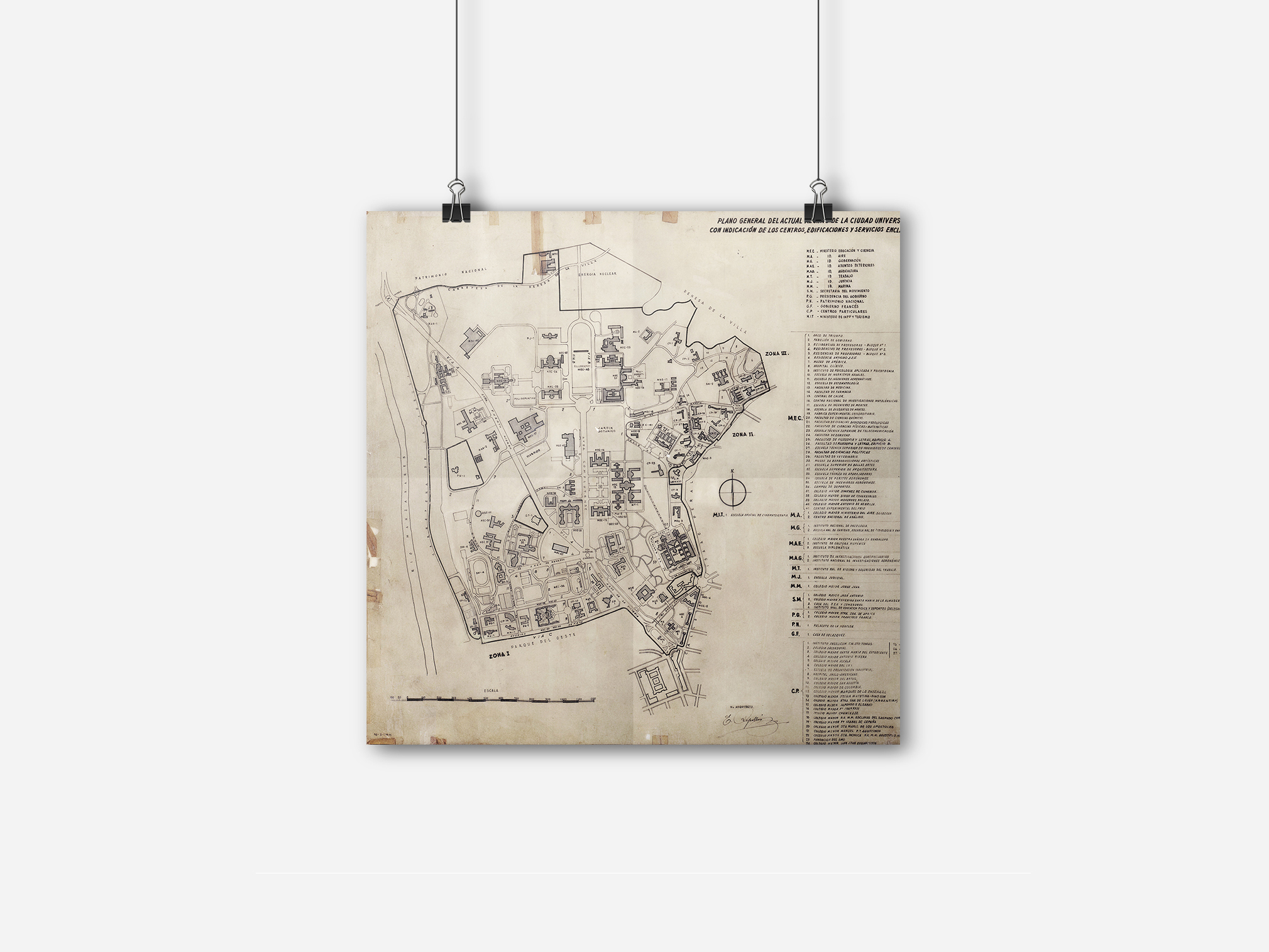
Preservation of the cultural heritage landscape of the university campus: A semantic-based digital platform for Madrid’s Ciudad Universitaria.
Leading researcher
Nicolás Mariné
Research team
Concha Lapayese
Ester Higueras
Graziella Trovato
Francisco Arques
Emilia Román
Rodrigo de la O
Ana Belén Berrocal
David Escudero
Alicia López Rodríguez
Diego Martín Sánchez
Eduardo de Nó
Diego Toribio
Years
2025-2026
Funded by the Community of Madrid through the Grant Agreement for the promotion and fostering of research and technology transfer at the Universidad Politécnica de Madrid, under Line A, Emerging Doctors.
Since the end of the 20th century, college heritage has been claimed as a particular category of cultural heritage, strongly related to a collective identity. It is not surprising that leading international organizations, such as UNESCO or the United States National Park Service, have declared several university campuses as places of historical interest for their architectural, urban and environmental values, and for the impact of their institutions on culture. In this regard, over the last decade there has been a collective debate on the historical, cultural and environmental significance of Madrid’s Ciudad Universitaria. The campus has been declared an Asset of Cultural Interest as it boasts an extensive architectural, museological and archival heritage, as well as an urban heritage, due to the originality of its conception; Ciudad Universitaria also conteains several immaterial heritage, particularly as a site of warfare during the Spanish Civil War and for its impact on generations of university students throughout the country during the 20th century. In addition, the University City Urban Planning Consortium has recently signed an agreement with the Community of Madrid in order to include this campus as part of the Arco Verde, a project that will allow the protection and conservation of this key element to promote socio-ecological sustainability on a regional scale.
2027 will mark the centenary of Ciudad Universitaria, providing an opportunity to reformulate the way in which this site is understood in accordance to international experiences. Patrimonialization of campuses has gradually expanded to a territorial scale becoming a much more complex concept, as proposed by the extensive literature produced by the Getty Research Institute, which, through the Campus Heritage Initiative, has been studying American campuses as “landscapes of cultural interest” for decades. With this terminology, the Getty Research Institute, together with ICOMOS (UNESCO’s advisory agency), recognizes that certain heritage assets – especially those of the 20th century, as is the case here – are too complex to be classified in traditional categories and require specific instruments for their safeguarding.
With an eye on the centenary of the Ciudad Universitaria, the main objective of this research project is to develop an open digital tool capable of centralizing information regarding the heritage of Madrid’s main campus in different formats (maps, photographs, videos or diagrams, among others) and on various scales (from the environmental to the scale of a museum object). This digital tool will serve to enrich university heritage; increase transparency and democratic participation through the use of open and interoperable data; promote intersectoral networks among the agents involved in the safeguarding, and for developing a decision-making support system for the future of the Madrid’s Ciudad Universitaria.